1. What is MGF?
MGF (Mechano Growth Factor) is an alternatively spliced variant of IGF-1 (Insulin-like Growth Factor-1) that is expressed in response to mechanical stress or muscle damage. It plays a vital role in muscle repair, growth, and regeneration by activating satellite cells and stimulating local protein synthesis. MGF is particularly important during the early stages of muscle recovery.
2. MGF Structure
Molecular Formula: C121H200N42O39
Molecular Weight:2644.9g/mol
CAS Number: 57773-63-4
3. MGF Research
MGF, also known as IGF 1Ec (human) or IGF 1Eb (rodent), is an alternatively spliced isoform of IGF 1, generated in response to mechanical stress or muscle damage. Its unique E-domain grants it distinct functionality separate from IGF 1Ea, triggering rapid tissue responses.
【1】Mechanism of Action & Expression
Induced within hours of mechanical overload, MGF appears before IGF 1Ea, signaling immediate recovery priorities【https://www.frontiersin.org/journals/physiology/articles/10.3389/fphys.2018.00999/full?utm_source=chatgpt.com】.
Activates muscle satellite cell proliferation, kicks off early hypertrophic signals, and enhances myoblast differentiation 【https://journals.physiology.org/doi/full/10.1152/ajpendo.00408.2013?utm_source=chatgpt.com】.
Has a strong autocrine/paracrine pattern—acts locally to boost IGF 1 sequestration at injury sites 【https://www.frontiersin.org/journals/physiology/articles/10.3389/fphys.2018.00999/full?utm_source=chatgpt.com】.
【2】Anti Inflammatory & Immunomodulatory Effects
MGF is produced by infiltrating macrophages post-injury and modulates inflammatory resolution, delaying macrophage apoptosis and cytokine clean-up 【https://www.frontiersin.org/journals/physiology/articles/10.3389/fphys.2018.00999/full?utm_source=chatgpt.com】.
Shifts immune responses toward balanced repair rather than unchecked inflammation.
【3】Tissue Protection Beyond Muscle
MGF promotes chondrocyte proliferation and cartilage repair【https://pmc.ncbi.nlm.nih.gov/articles/PMC10281885/?utm_source=chatgpt.com】.
It protects tissues from mechanical overloading, reducing apoptosis in shear or ischemic stress scenarios 【https://www.sciencedirect.com/science/article/abs/pii/S0014482718300958?utm_source=chatgpt.com】.
【4】Neuro-regenerative Functions
Overexpressed MGF in mice supports adult neurogenesis, especially in hippocampus/olfactory areas, and rescues age-related neuronal loss 【https://molecularbrain.biomedcentral.com/articles/10.1186/s13041-017-0304-0?utm_source=chatgpt.com】
In ischemic brain models, MGF provides significant neuroprotection, outperforming IGF 1Ea in neuron salvage 【https://molecularbrain.biomedcentral.com/articles/10.1186/s13041-017-0304-0?utm_source=chatgpt.com】.
✅ Why Consider MGF?
🏋️ Rapid muscle recovery & growth—activates satellite cells immediately post-stress
🛠️ Reduces inflammation by modulating macrophage activity
💎 Tissue-specific repair without systemic IGF-1 side effects
🦴 Supports cartilage health, joint integrity
🧠 Enhances neurogenesis & brain repair, valuable for aging or injury
⏳ PEG MGF forms extend effect duration, enabling fewer doses
4. Future MGF Research
A. Therapeutic Muscle & Cartilage Regeneration
PEG MGF peptides are in development to enhance satellite cell activation, improving outcomes in muscle-wasting diseases and joint repair 【https://pmc.ncbi.nlm.nih.gov/articles/PMC10281885/?utm_source=chatgpt.com】【https://molecularbrain.biomedcentral.com/articles/10.1186/s13041-017-0304-0?utm_source=chatgpt.com】.
Combined with cell therapies (e.g., satellite cell transplants), MGF boosts host integration and tissue regeneration【https://www.amjtransplant.org/article/S1600-6135%2822%2912608-0/pdf?utm_source=chatgpt.com】.
B. Inflammation Modulation
Further studies needed to define MGF’s effect on chronic inflammation, post-injury immune regulation, and autoimmune conditions, leveraging its inflammatory signaling control.
C. Neurological & CNS Applications
Promising data exist for neurogenesis and neuroprotection—conditions like stroke, Alzheimer’s, and Parkinson’s are potential targets【https://www.frontiersin.org/journals/physiology/articles/10.3389/fphys.2018.00999/full?utm_source=chatgpt.com】.
Timing may be critical: early life vs late, young vs aged responses differ significantly.
D. Cardiovascular & Organ Protection
Research supports MGF’s protective effect in ischemic tissues (including the heart), preventing cell death post-injury .
Potential use in heart attack recovery and organ transplant survival protocols.
E. Delivery Technologies & Safety Profiling
Development of PEGylation, microsphere, or hydrogel systems to prolong bioactivity.
Safety profiling (tumorigenicity risk, off-target proliferation) is ongoing, with early data indicating limited systemic effects.
5. Application Area
Musculoskeletal Repair: Ligament, tendon, and skeletal muscle recovery (injury, surgery, aging)
Osteoarthritis / Cartilage Regrowth: Through chondrocyte proliferation
Neurological Regeneration: Brain aging, stroke recovery, neurodegenerative support
Cardiometabolic Healing: Organ preservation after ischemia or transplant
Sports Medicine & Longevity: Performance recovery, age-related degeneration support
⚠️6. Safety & Considerations
Mostly studied in animal and preclinical settings—human trials are limited
Must avoid use in cancer-risk scenarios, as growth signals might exacerbate proliferation
PEG-MGF dosing protocols require careful design to minimize immune response or scar tissue
Quality of synthetic MGF products varies—research-grade purity and validation is essential
✅ Summary
MGF is a versatile tissue-specific growth signal, initiating rapid satellite cell activation, inflammation balance, and cell survival mechanisms across muscle, cartilage, heart, and brain tissues. PEG modifications enable longer activity, improving practicality for therapeutic use. As research deepens—from stem cell engraftment to neurodegeneration—the promise of MGF lies in its precision-targeted regenerative potential.
ALL ARTICLES AND PRODUCT INFORMATION PROVIDED ON THIS WEBSITE ARE FOR INFORMATONAL AND EDUCATIONAL PURPOSES ONLY.
The products offered on this website are furnished for in-vitro studies only. In-vitro studies(Latin: in glass) are performed outside of the body. These products are not medicines or drugs and have not been approved by the FDA to prevent, treat or cure any medical condition, ailment or disease. Bodily introduction of any kind into humans or animals is strictly forbidden by law.


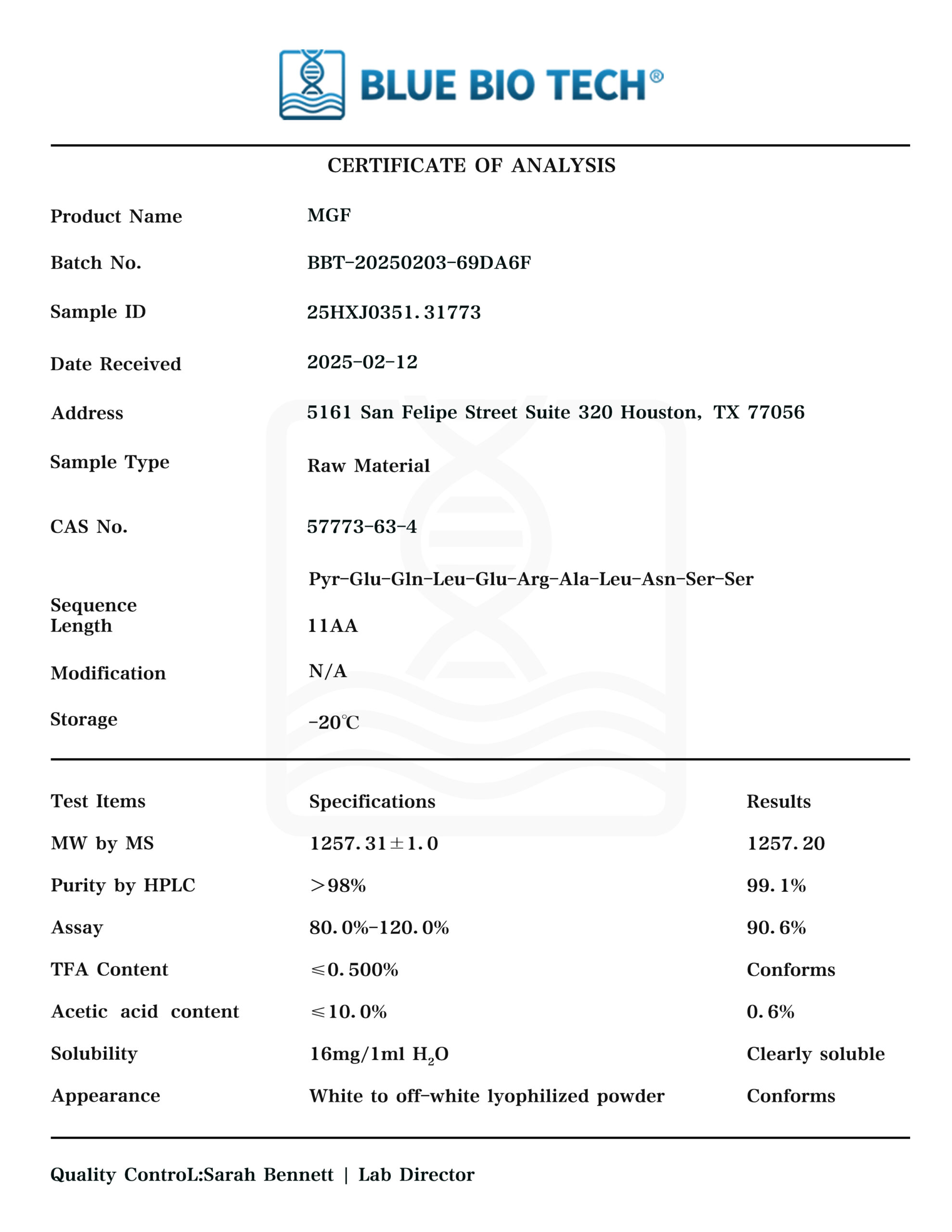
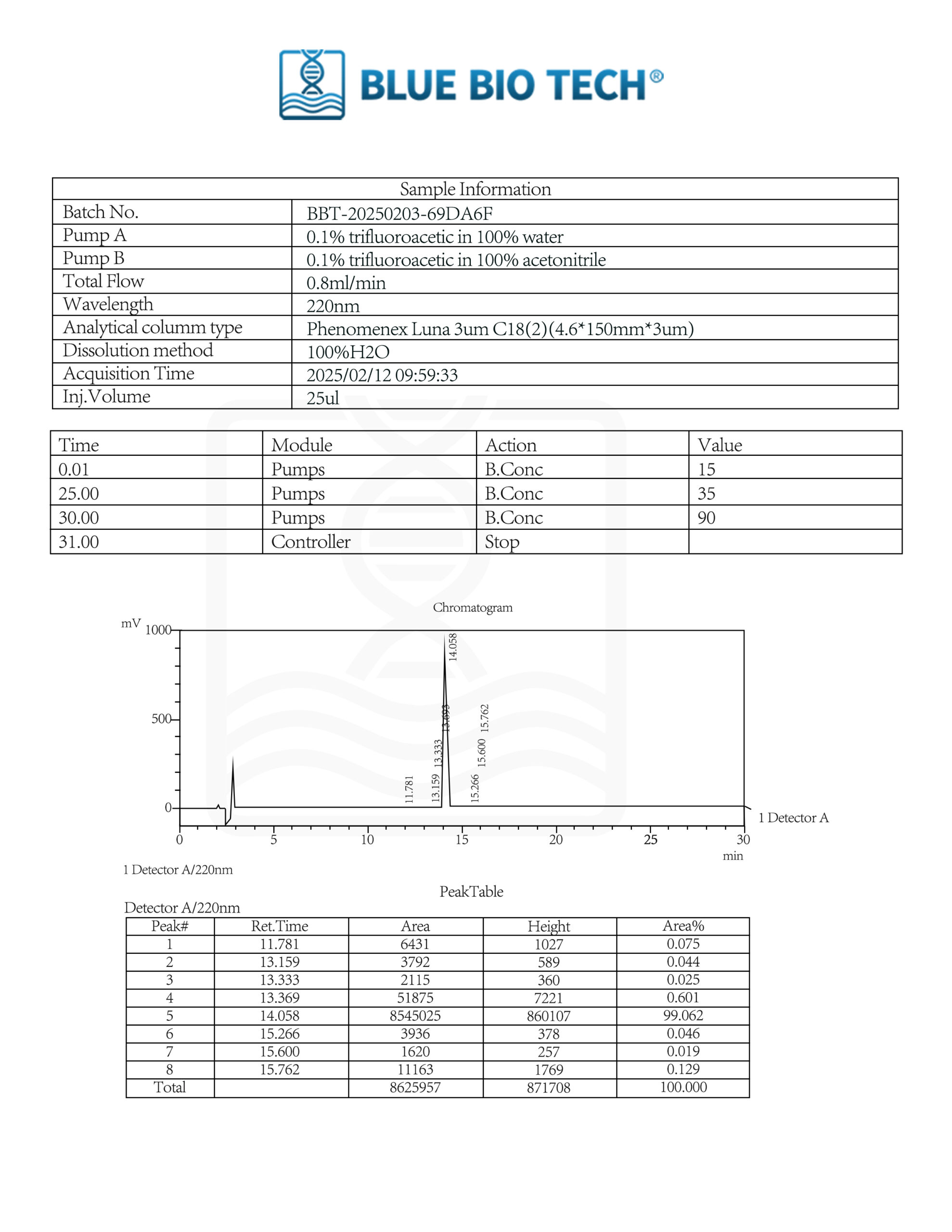
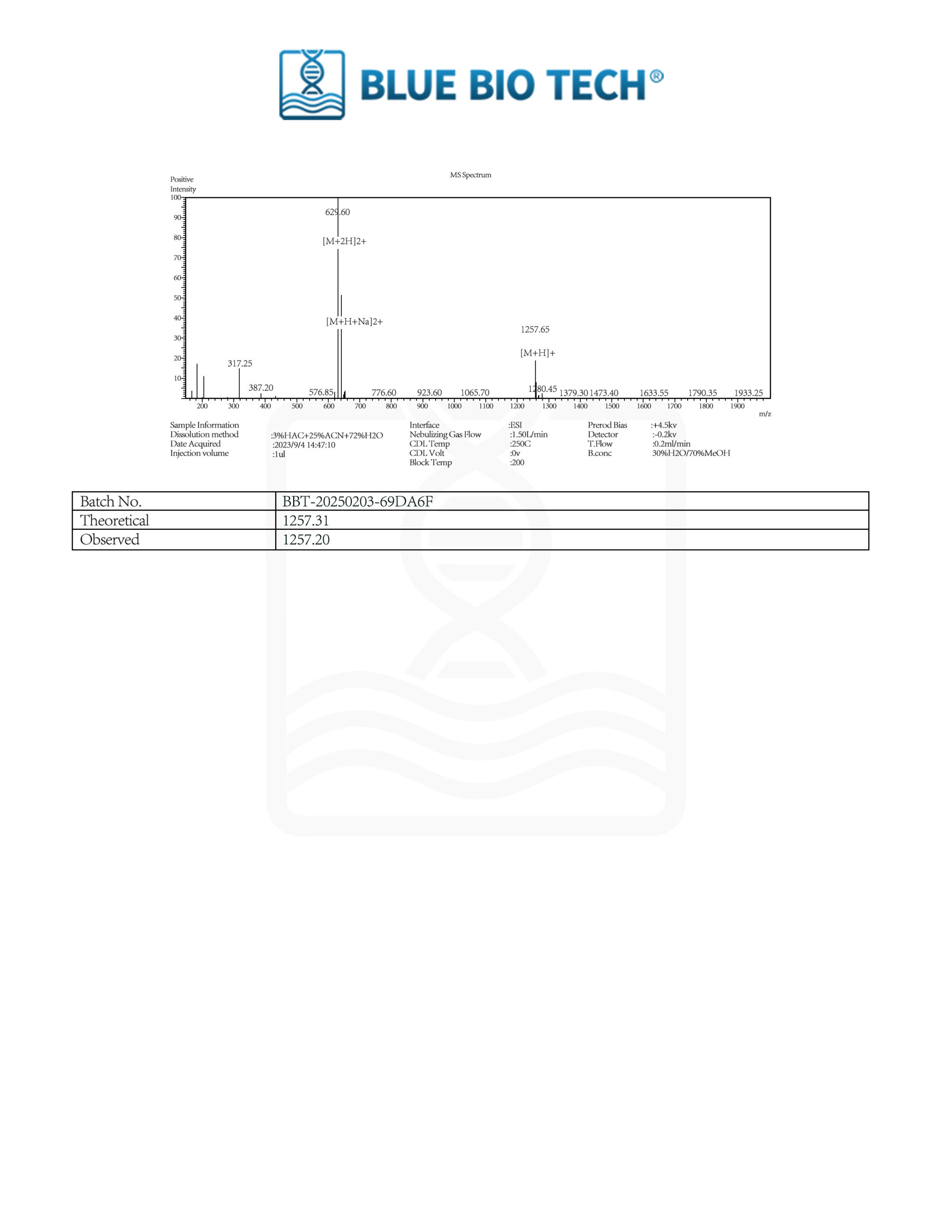
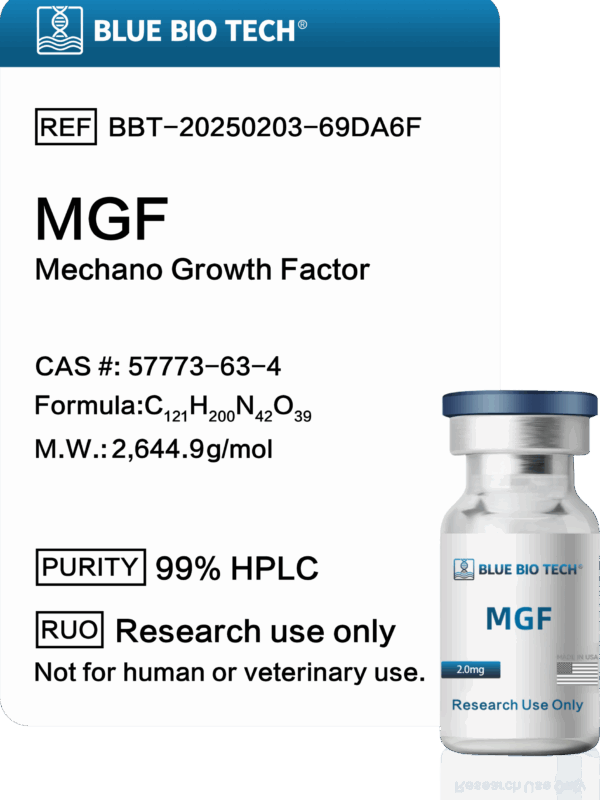
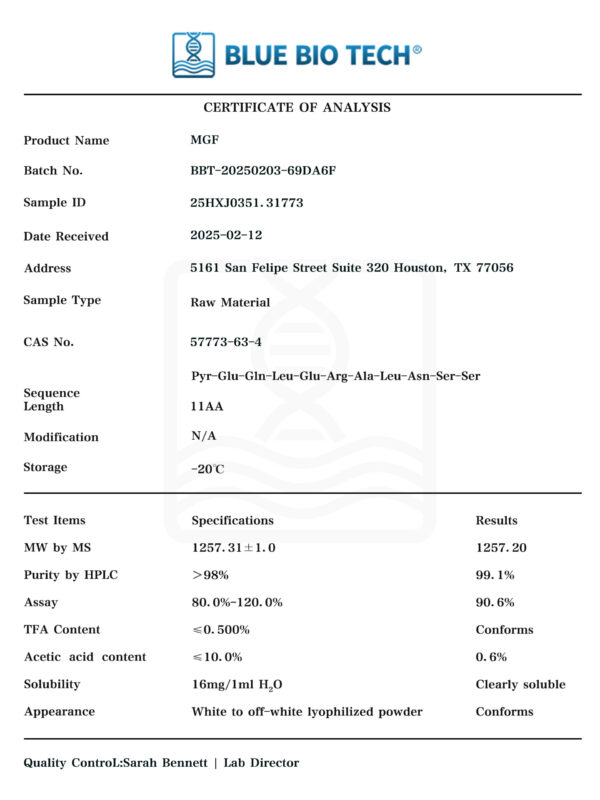


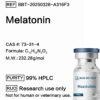
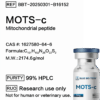
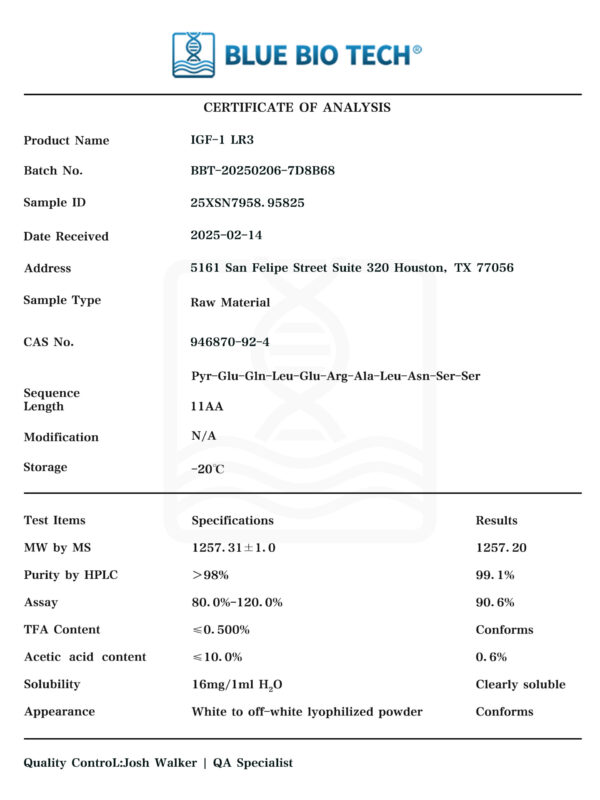
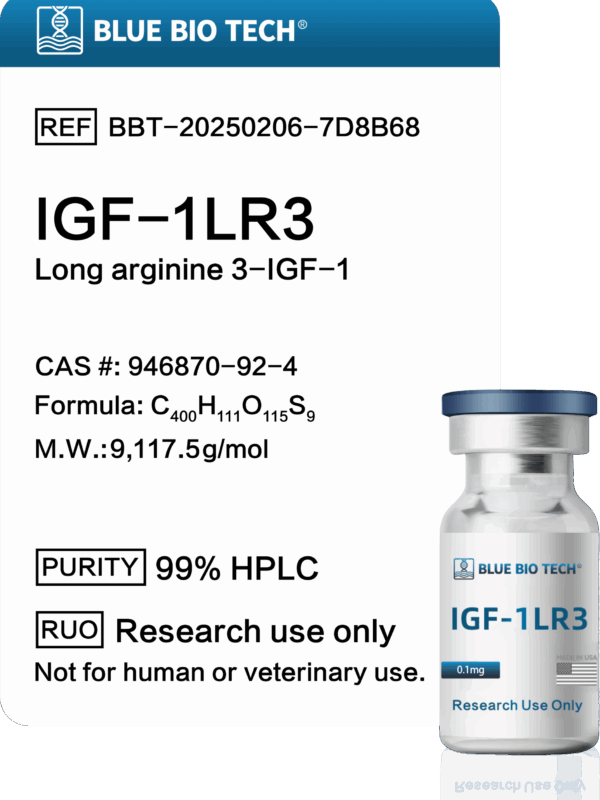
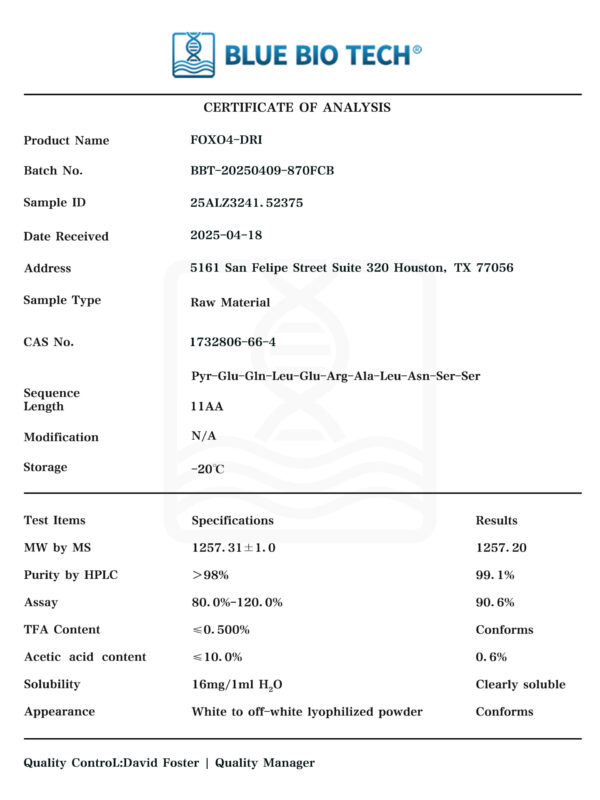
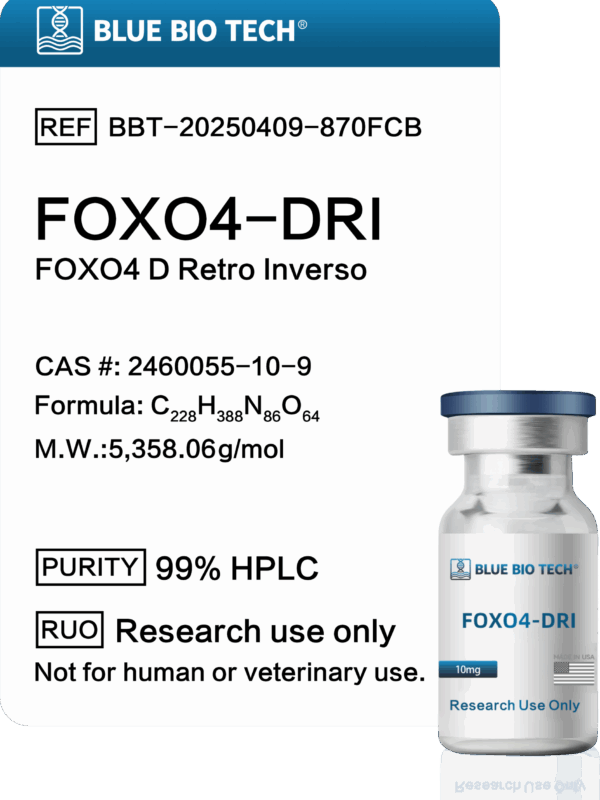
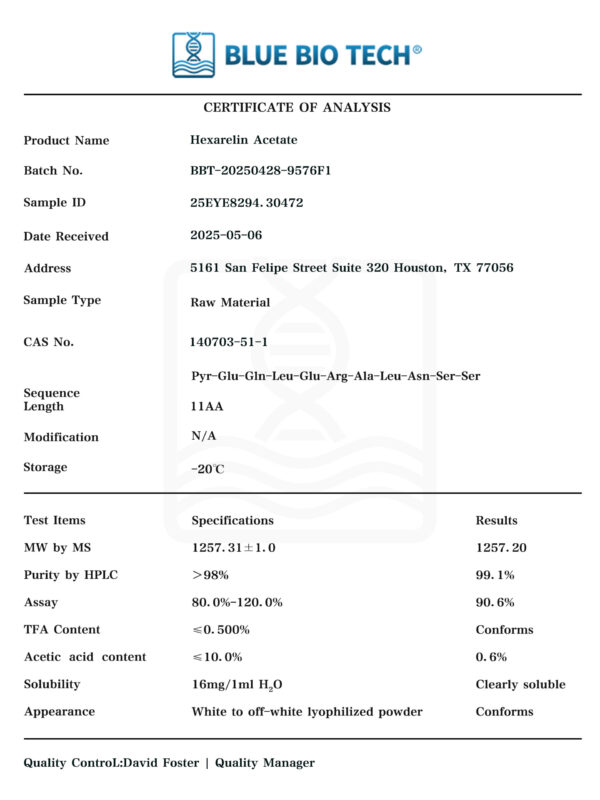
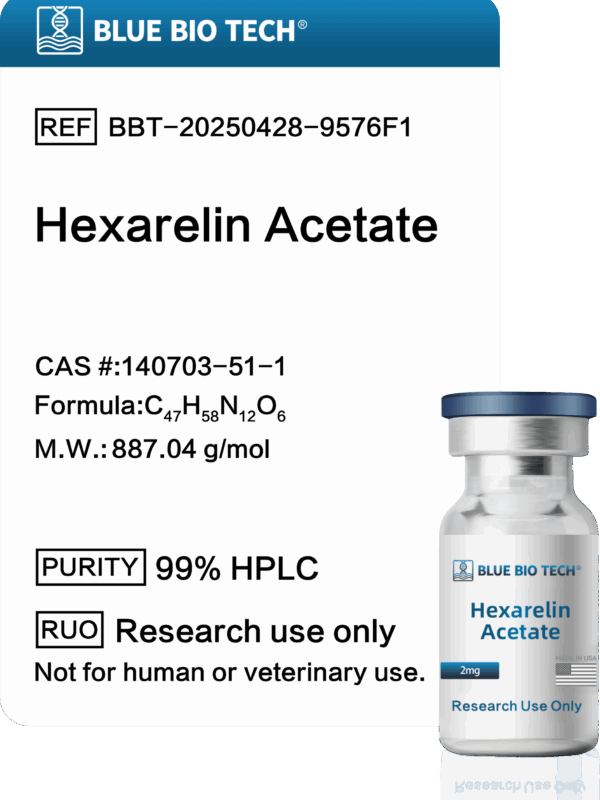
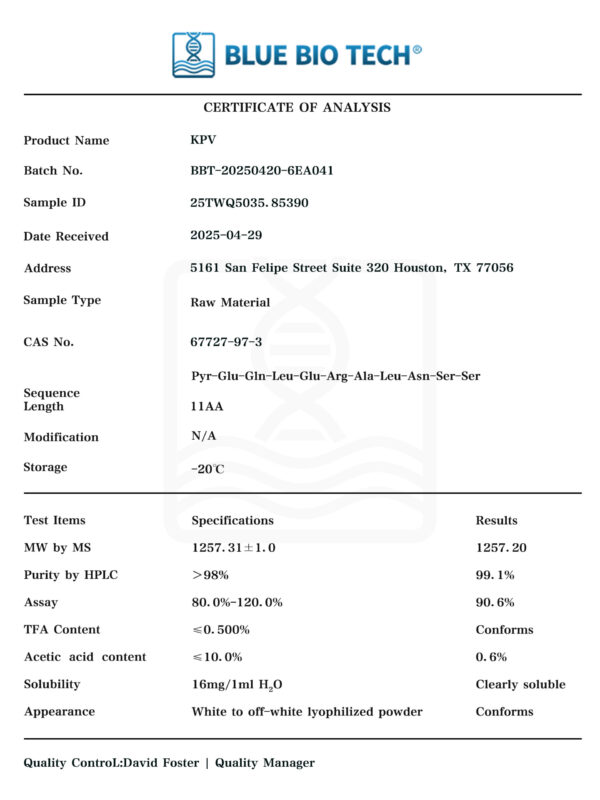
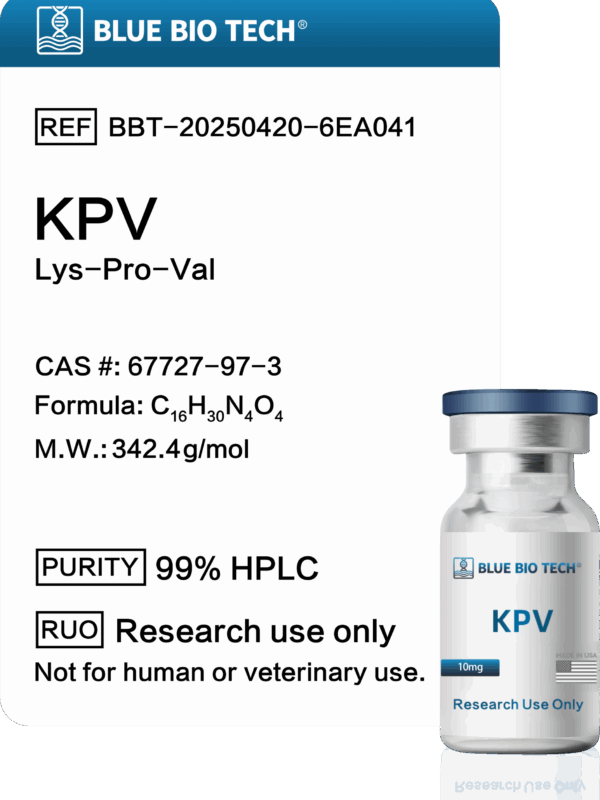
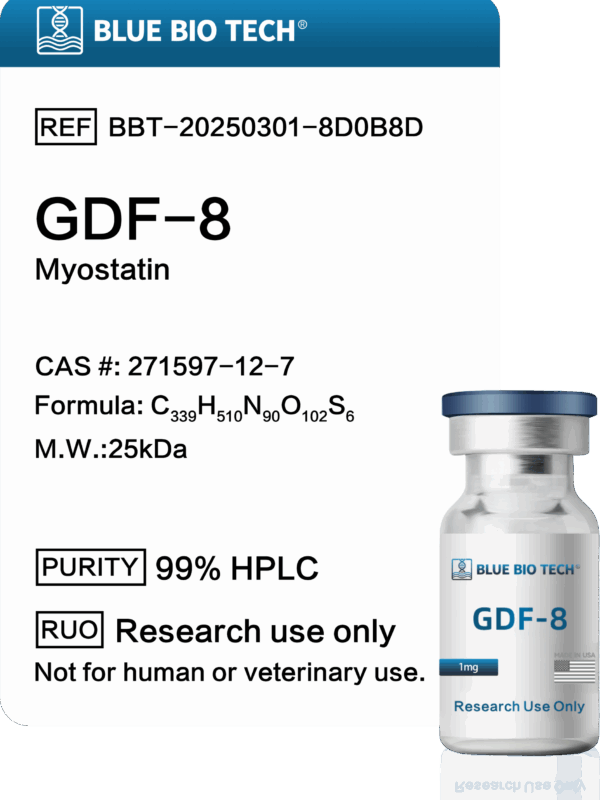
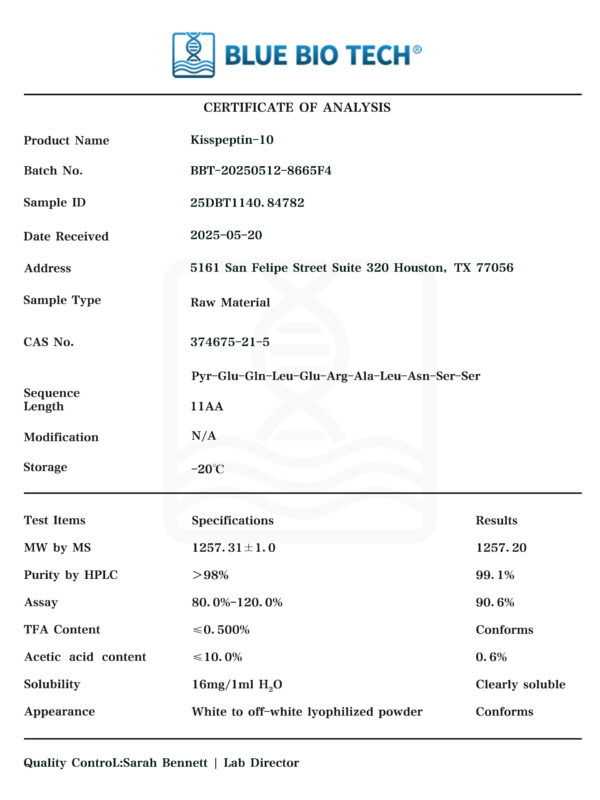
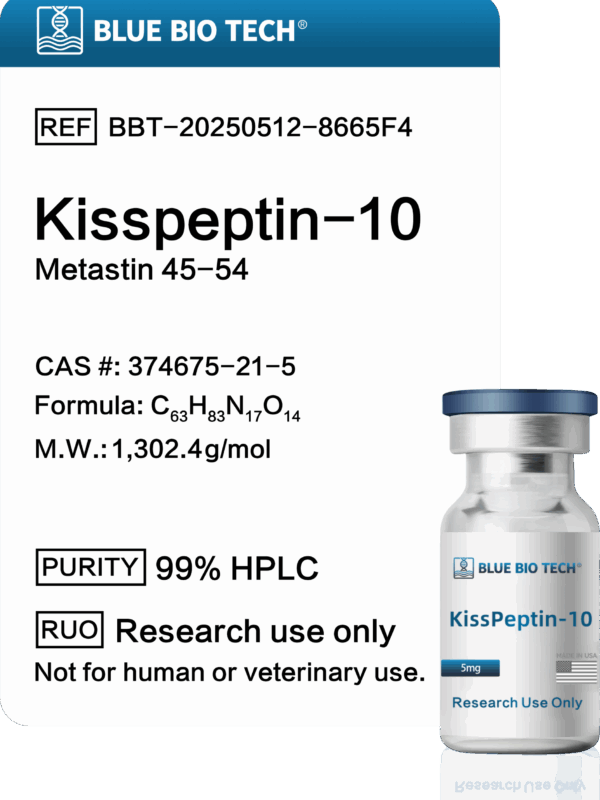
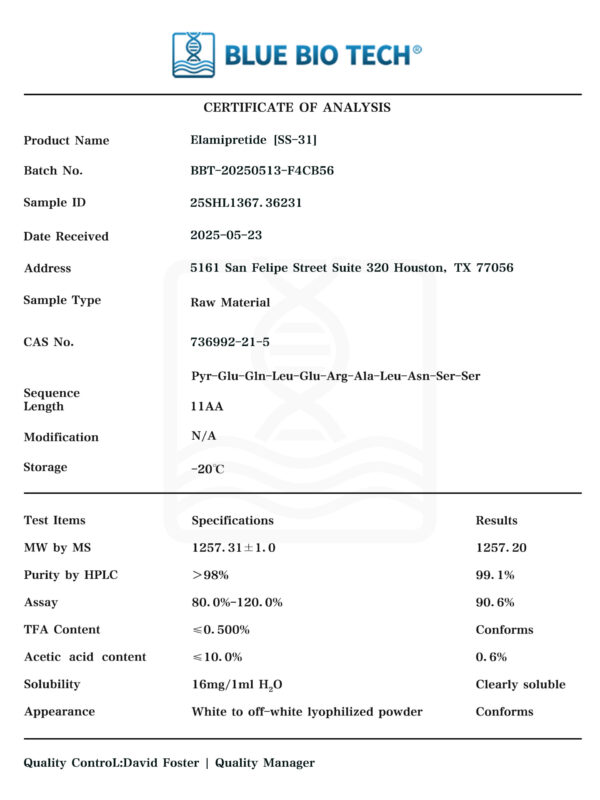
![Elamipretide [SS-31] 10mg](https://bluebiotech.us/wp-content/uploads/2025/08/Elamipretide-SS-31-scaled-600x800.png)
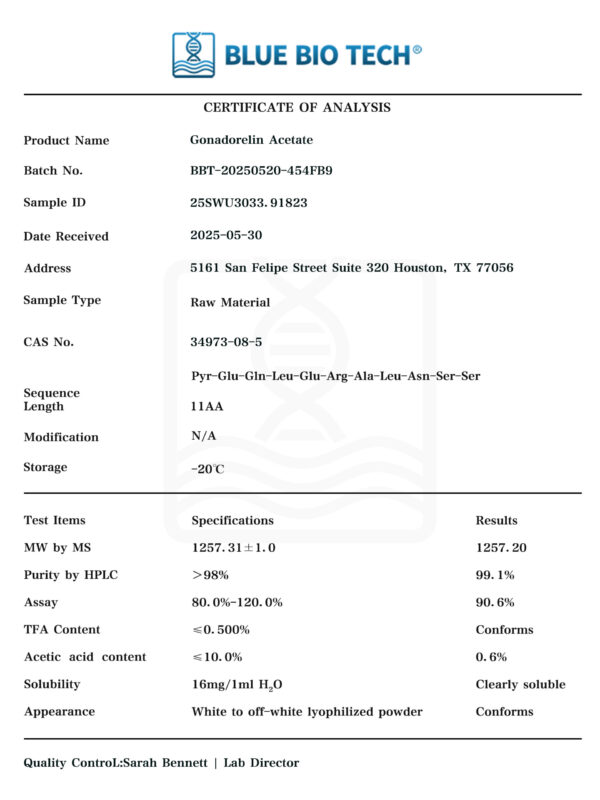
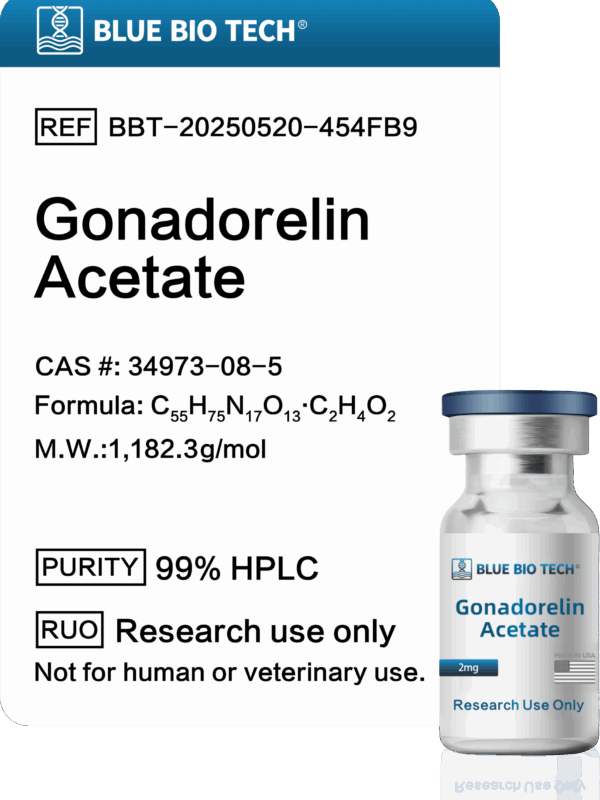
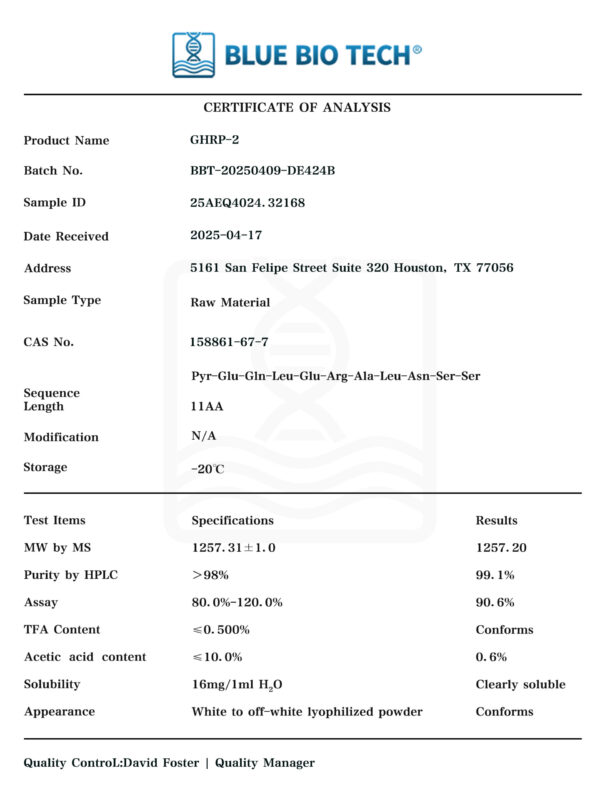
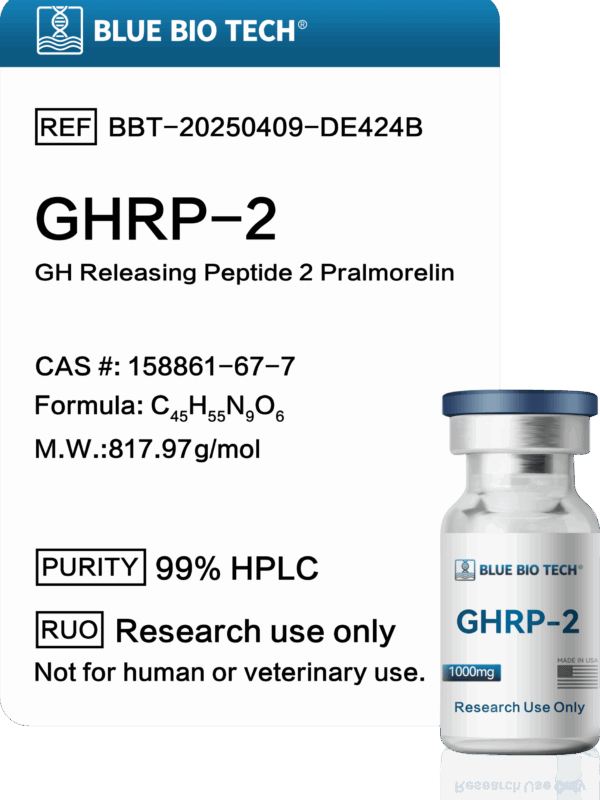
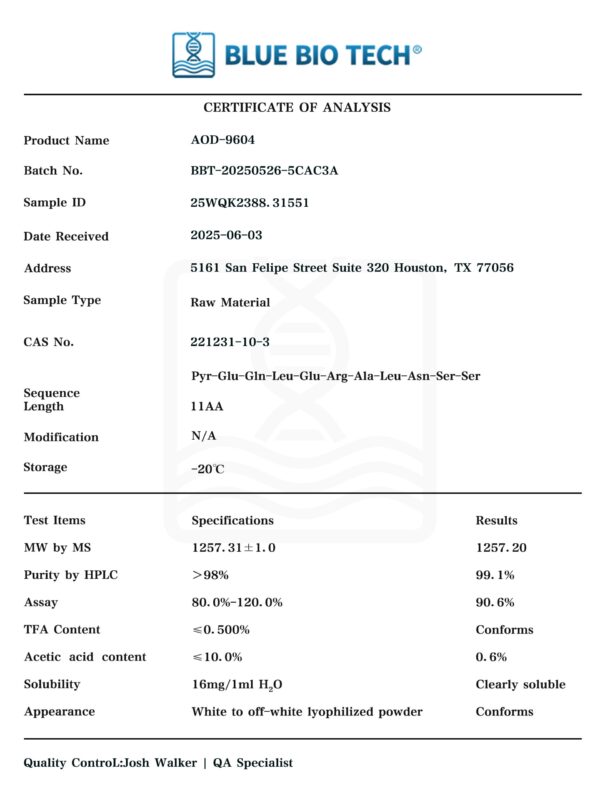


Reviews
There are no reviews yet.